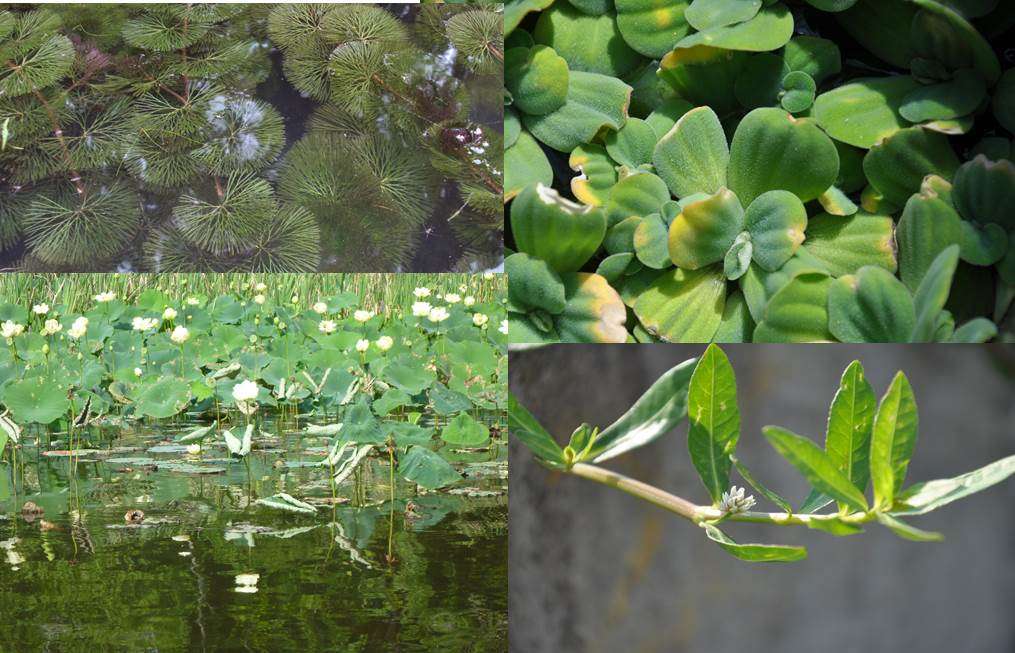
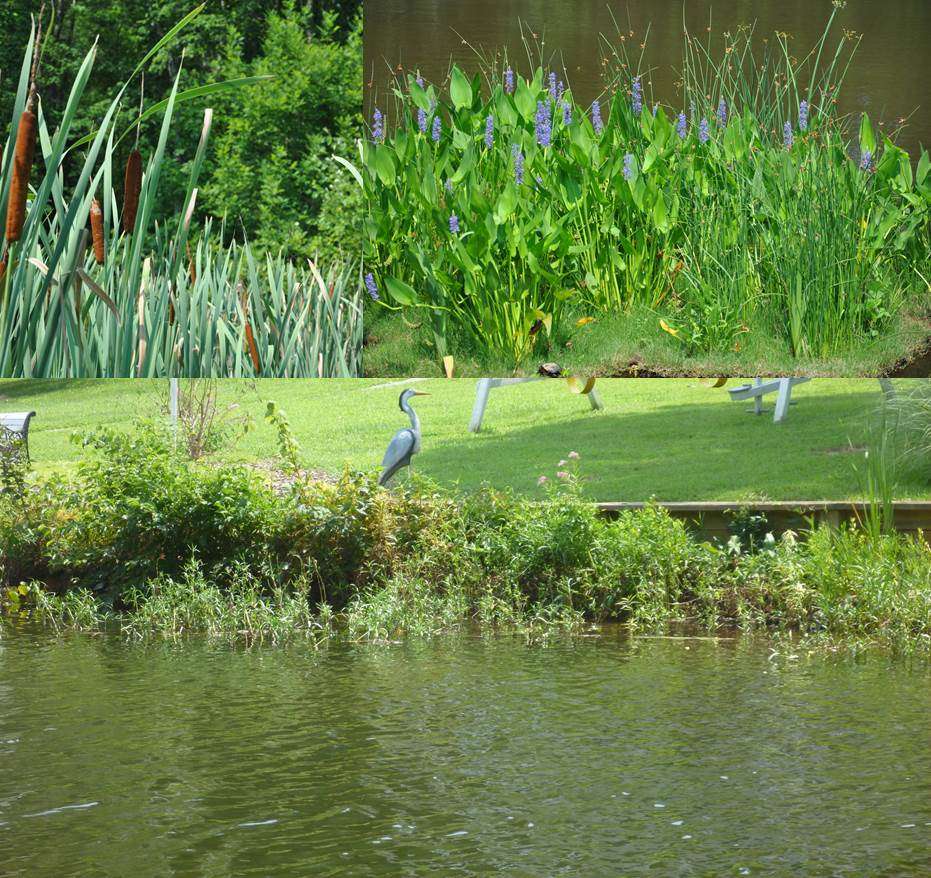

Going by such common names as reeds, buggy whips, and tulies, rushes often exist year-round providing cover at which to throw during all seasons. Here are a few common species. They can be differentiated from sedges by remembering the phrase, âSedges have edges, rushes are round.â Pictured here is bulrush, a common native rush. Rushes provide great habitat for bass to ambush, so weedless baits and topwaters are recommended.
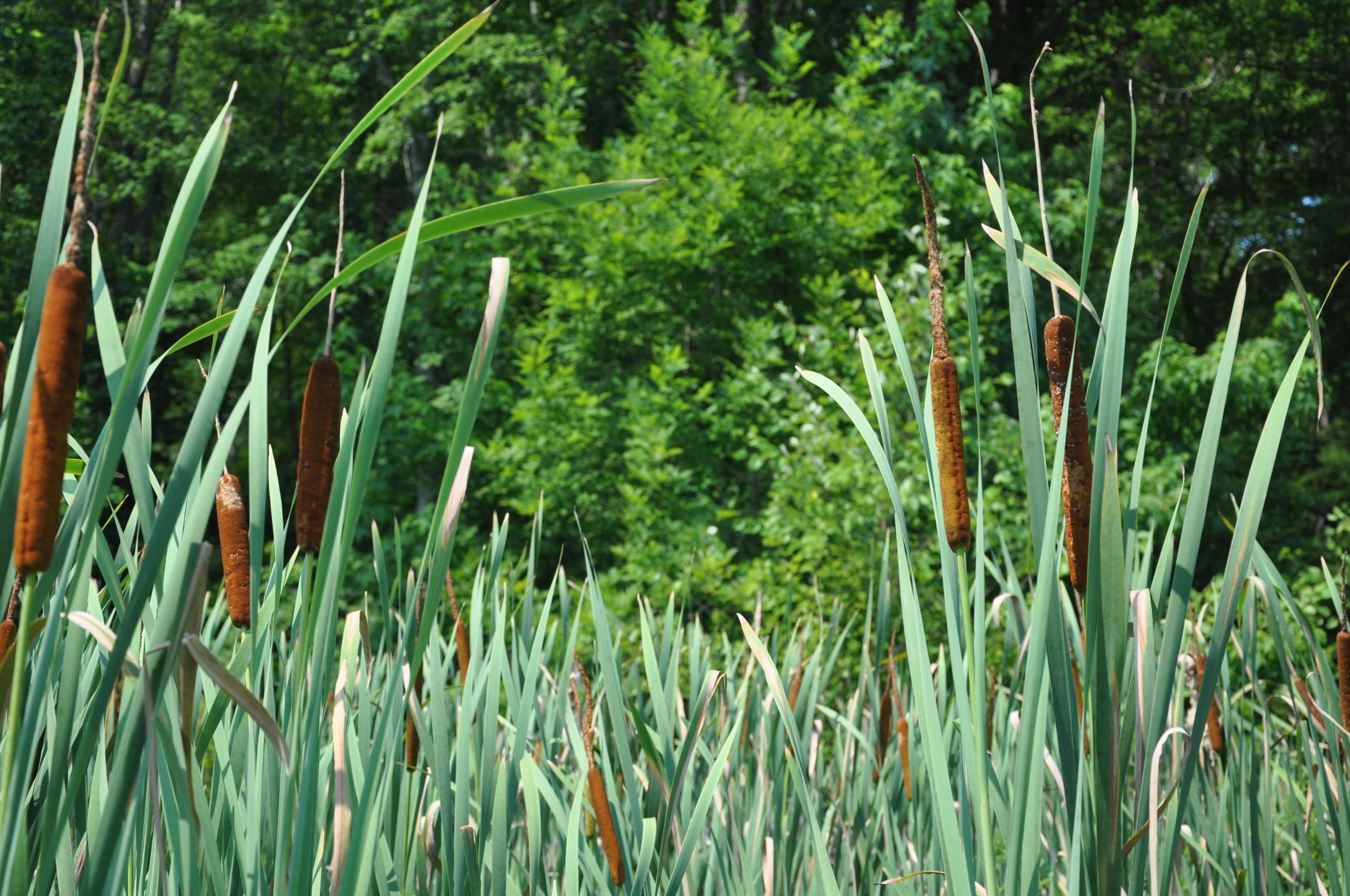
Cattail is a native shoreline plant easily distinguished by its brown spike-like flower that gets fuzzy in winter. Cattails are not as often sought by bass fishermen because they provide very little in-water habitat.

Very common in many waters, water willow goes by such names as gator grass or willow grass and can provide a great opportunity for flipping. This species is there year-round, so take advantage of it, especially transitions between it and other species.
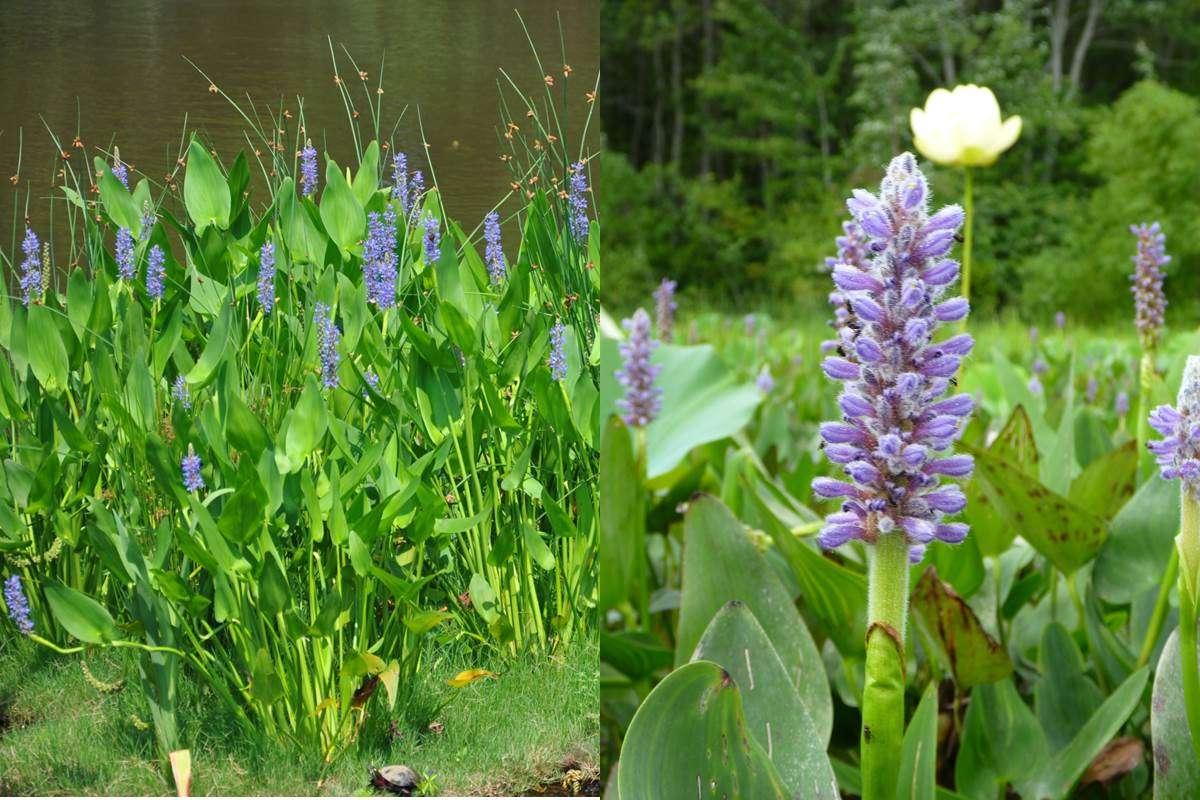
Pickerelweed is very beautiful native plant and is equally beneficial to a fishery. This species is easy to identify in spring by its purple flowers. Pickerelweed often grows in clumps, providing that perfect transition along stretching banks of species like water willow. Flip a creature bait in spring and hold on!
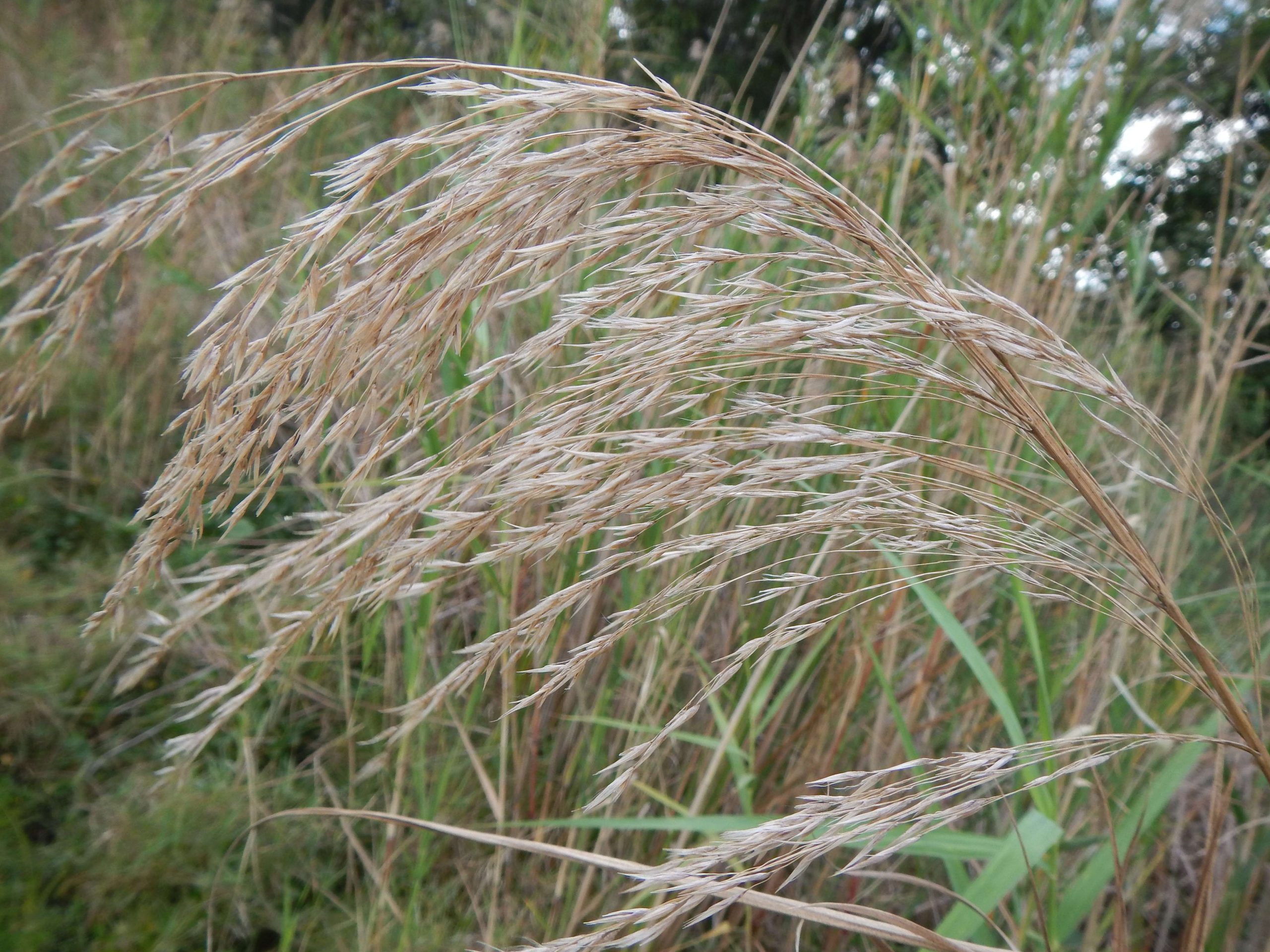
Phragmites is an invasive emergent. The common reed can take over entire shorelines, displacing native species and growing up to 10 feet high. This species provides very little for a bass, rarely extending into water and growing so thick that most shoreline species avoid it.
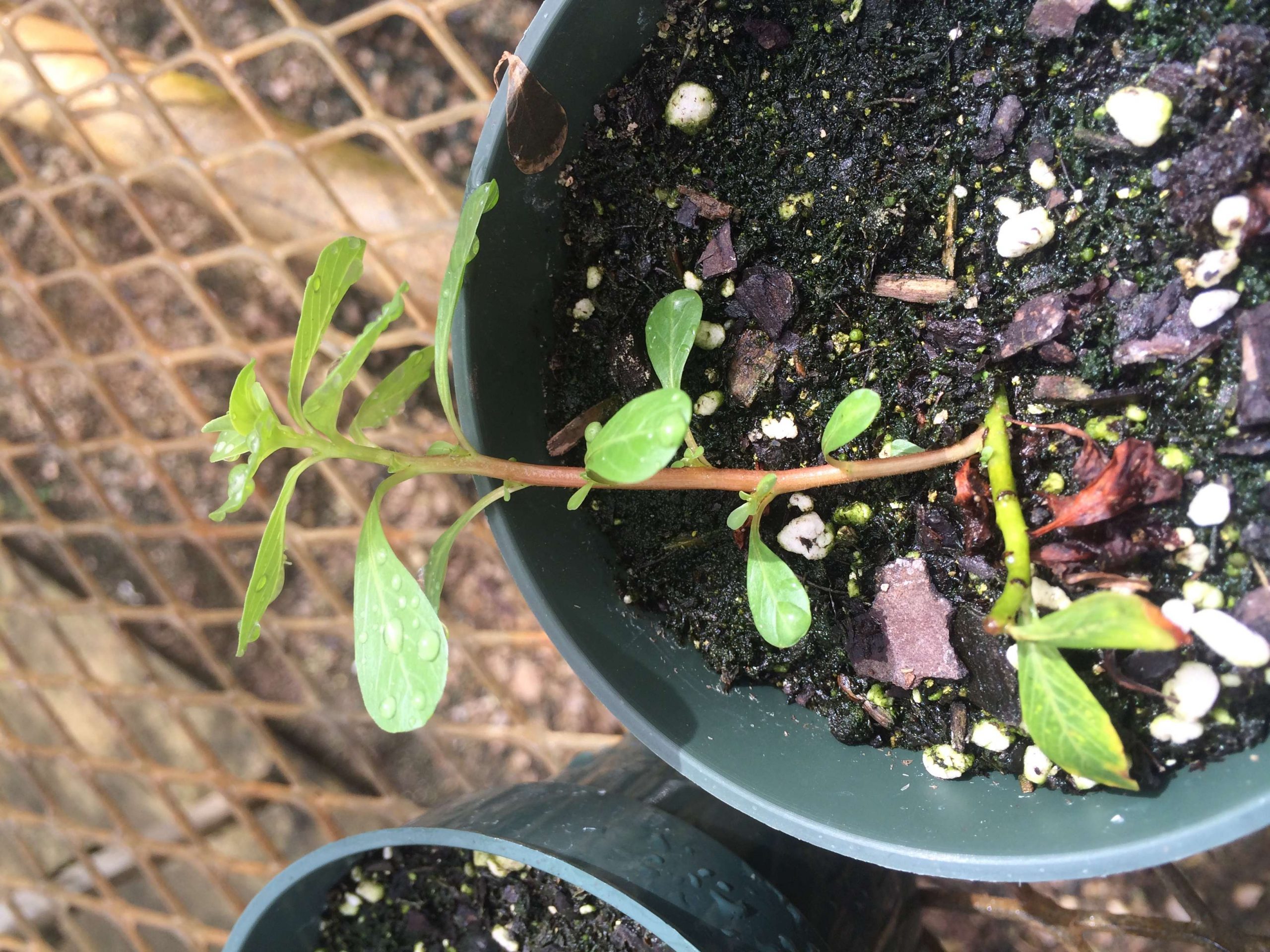
While this invasive species can stretch far out into the water column providing canopy cover, creeping water primrose often grows so thick that even an ambushing bass canât penetrate through to unsuspecting prey. When fishing primrose, try flipping edges in deeper water where growth is sparser. Another option in early spring is to fish a reaction bait in and around short, young growth. Forget about anything but weedless baits in the thick of summer for creeping water primrose.

Very similar to creeping water primrose, this invasive can be found throughout the southeast creating thick mats from shoreline to deep-water dropoffs. Fish alligatorweed edges with reaction baits and flip mat holes â if you can get to them. Come prepared with braid because alligatorweed stems can be as big around as your thumb and make horsing big bass into the boat difficult. Alligatorweed has white flowers and opposite leaves, whereas primrose has yellow flowers and alternate leaves.

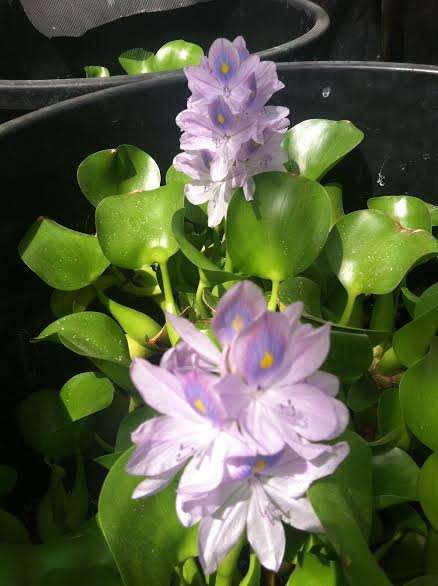
Also known as Okeechobee mats, water hyacinth is a very common invasive that can provide cover for bass in the spring when they are just beginning to produce new plants from old stems or in the dead of winter when some plants have died back. Mats get so thick by late summer that even the heaviest punch bait wonât get through. Fish pockets in new hyacinth mats during spring for big spawning females. Without management, some lakes are nearly non-navigable because of hyacinth growth.

Contrary to its name, individual giant salvinia plants are rather small. However, floating colonies of this plant can completely block a waterway. This quickly reproducing plant is one of the worst to fish because holes in mats are very hard to come by and decaying mats can remove large amounts of oxygen from the water. There is no great way to fish giant salvinia.
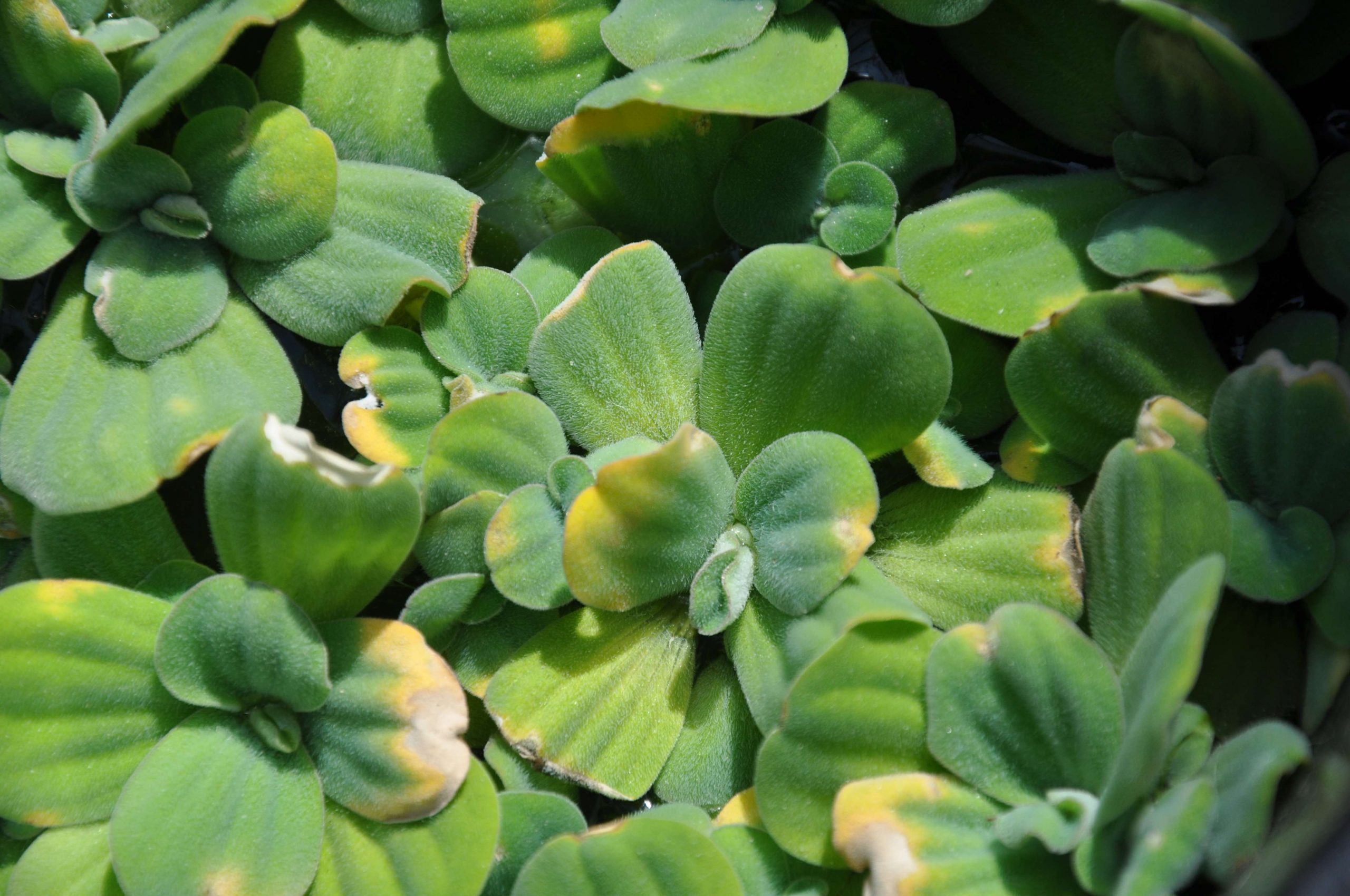
Water lettuce, which looks just like its name implies, is a very common plant in the Southeast. Another floating mat former, this plant can be fished much like hyacinth. Look for holes in mats or fish edges of well-established colonies. Forget trying to fish or navigate through large populations of this invasive.

Duckweeds are most often referred to as just pond scum, but they are actually some of the smallest flowering plants in the world. With zero (watermeal) to two or more tiny roots each (giant duckweed), you can fish nearly any technique through and underneath these native floating plants. A frog creates an easy silhouette and trail through duckweed as does a buzzbait, so give both your best shot in summer when duckweeds are most common.

American lotus (Nelumbo lutea Willd.)
The American lotus, often referred to as jumbo lilies, is one of the most recognizable plants in fishing, and this native plant can be some of the best bass habitat around. The large round leaves on top of the water make for a great ambush site for largemouth, and the gaps between leaves can be a deadly place for a frog. These lilies are easily identified by their size and their ability to âstand upâ during the warm summer months. Flip or throw a frog during peak growth, and fish old stems with weedless baits in winter when not much else is still around.
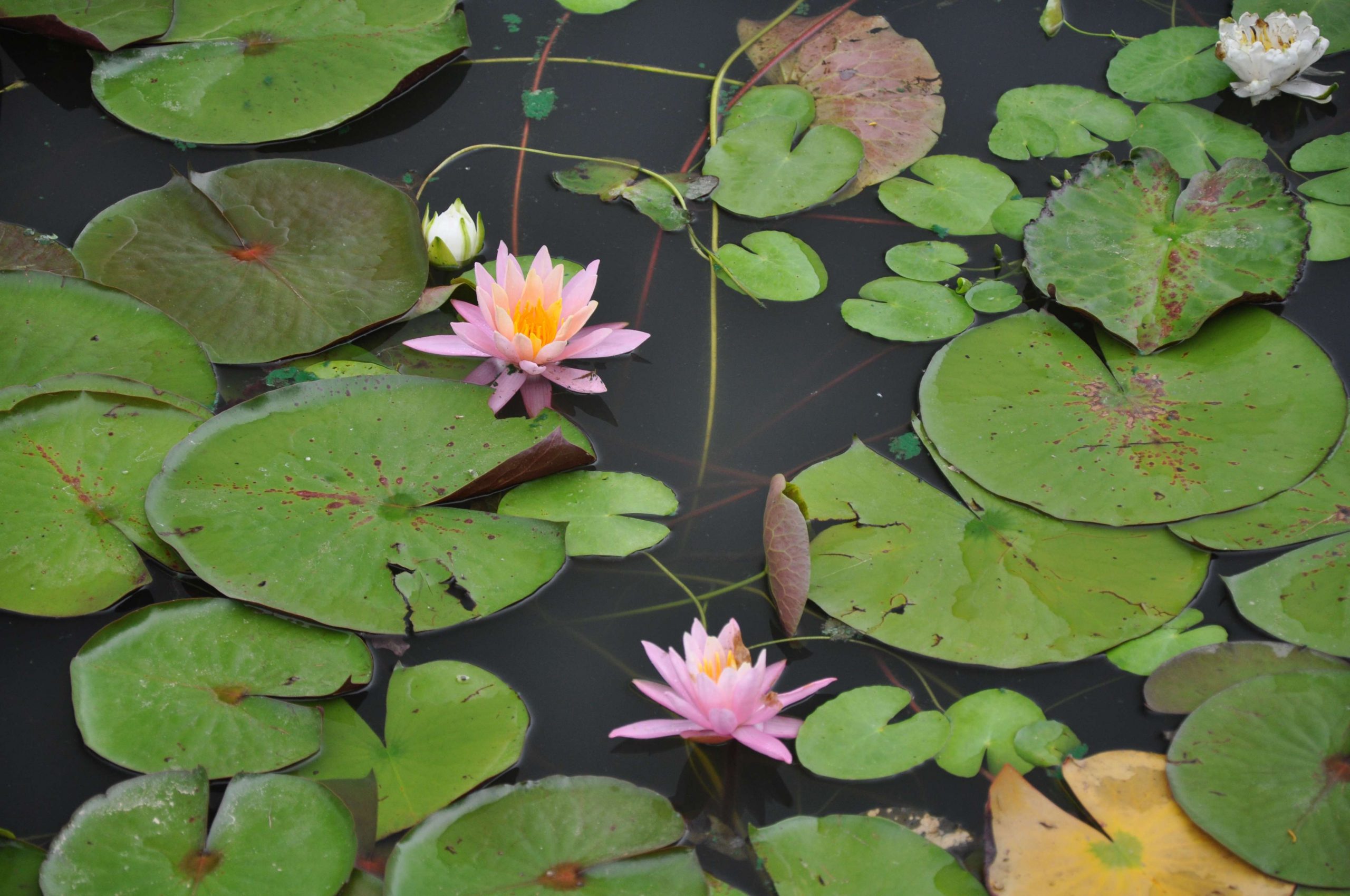
A very common native floating leaf plant from north to south, this water lily has a distinct âpie cutâ in its circular leaf. Fish water lilies much like lotus. A punch bait can also be effective on these smaller plants. Donât forget a buzzbait or other topwater along its shallow fringes!
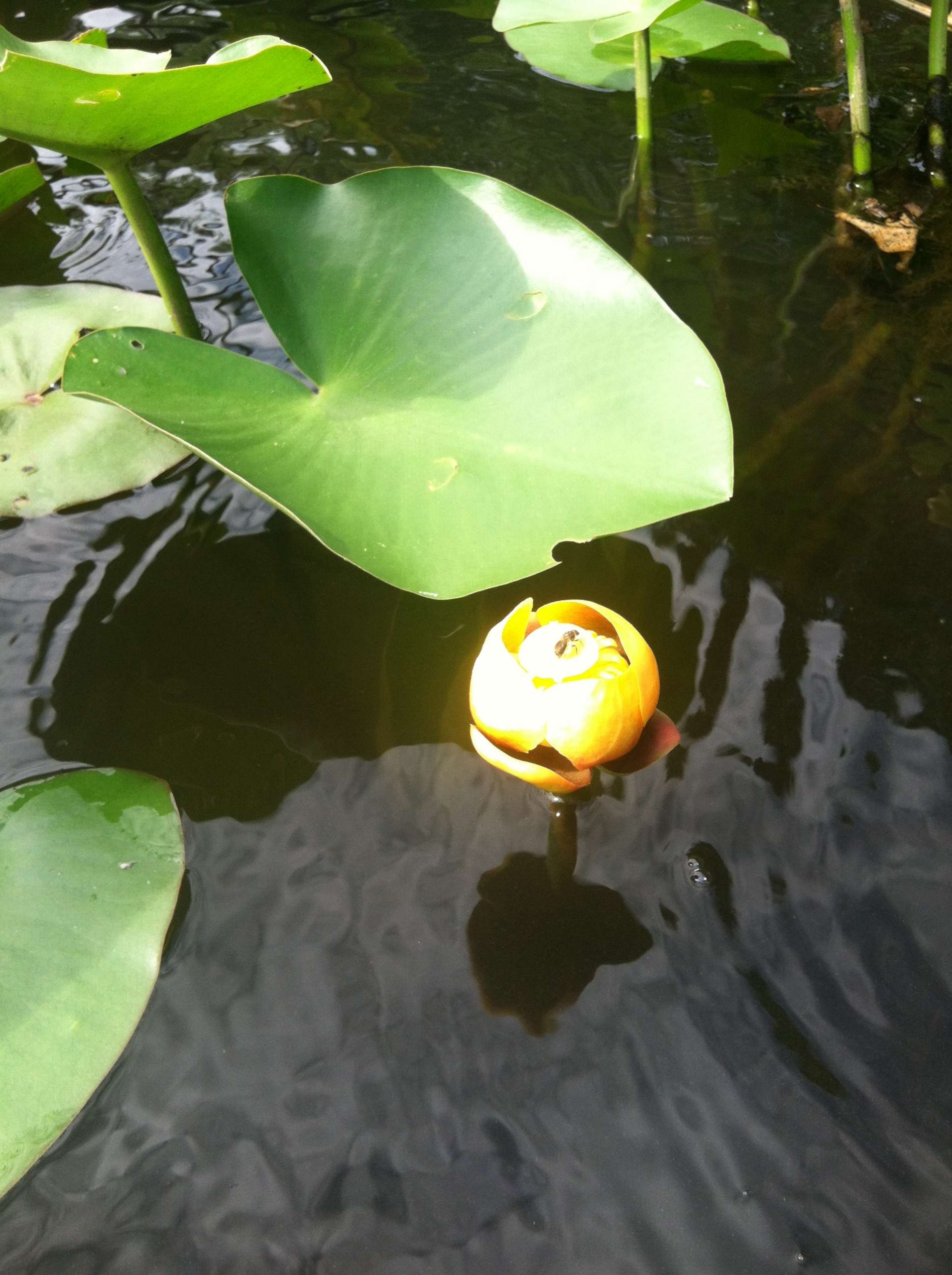
Often found growing alongside American lotus, native spatterdock is easily identified by its arrowhead shape and yellow ball flower. Also like lotus, leaves tend to stand up later in the growing season, making for a perfect opportunity to flip at the bases of these native plants. An open canopy beneath these rooted floaters can hold some monsters, so donât skimp on line strength.

One of the most often seen floating leaf plants in bass ponds and lakes is watershield. Also called snot bonnet, the small oval leaved plants have a snot-like substance growing along their red stems underwater, which helps keep the plant afloat. The small size and colony-forming nature of this plant makes for great frogging. Try reaction baits in the late spring when new leaves are being sent to the surface. Find holes and transitions in watershield, and you will find bass.

The only invasive in our floating leaf group is the floating heart. Although a native variation exists, the crested and yellow invasive types can cause major problems. Infestations on Lake Marion can be seen from space, and the clustering nature of this plant makes fishing it nearly impossible. Try fishing the edges of this ever-expanding plant in deeper water.

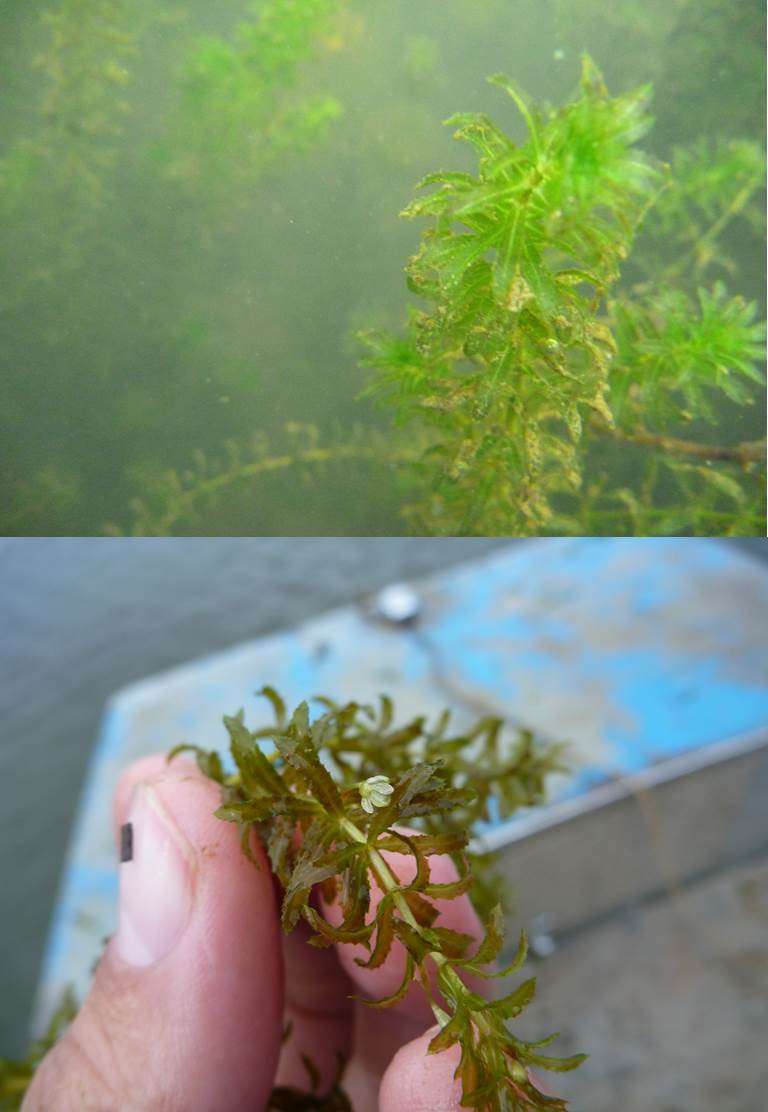
We canât start this list without mentioning the king of invasives, hydrilla. With populations all across the United States, this plant is mistakenly touted as a bass fishermanâs best friend. Although it can provide a boost to the fishery during introduction, if unmanaged this plant can take over every cubic inch of water between the shoreline and 20 feet, or even deeper in clear water. Thick mats can starve water of oxygen and cause radical temperature fluctuations. To make things worse, this plant is almost impossible to stop once it stops being beneficial and starts being nasty, so reversing a lake to its âglory daysâ can be impossible without costly measures. Finding hydrilla early in the spring when it has just sprouted is when we think fishing is best. Rip a lipless crankbait or other reaction bait through and above the vertical grassline.

Cabomba, often mistaken for milfoil, is native to the Southeast and can be a great plant to hold bass, especially along its edges. But be careful: An invasive biotype (that the aquarium trade created) exists that can look identical to the native. A good rule of thumb is that the native leaves are all red, whereas the invasive aquarium plant is all green or red on only one side. Try punching mats of cambomba in the summer, but make sure you have enough weight to get the bait down below the upper canopy.

Also confused with milfoil, coontail is another native plant that can hold bass. Coontail does not have multiple leaflets around its stem like milfoil, and leaves are more crowded at the tips of plants, making it look like a raccoonâs tail. You can find coontail growing during the year when no other submersed plant is still around. Try dropping a weedless soft plastic in gaps between plants. This is also a great plant across which to skip a frog when it is topped out.
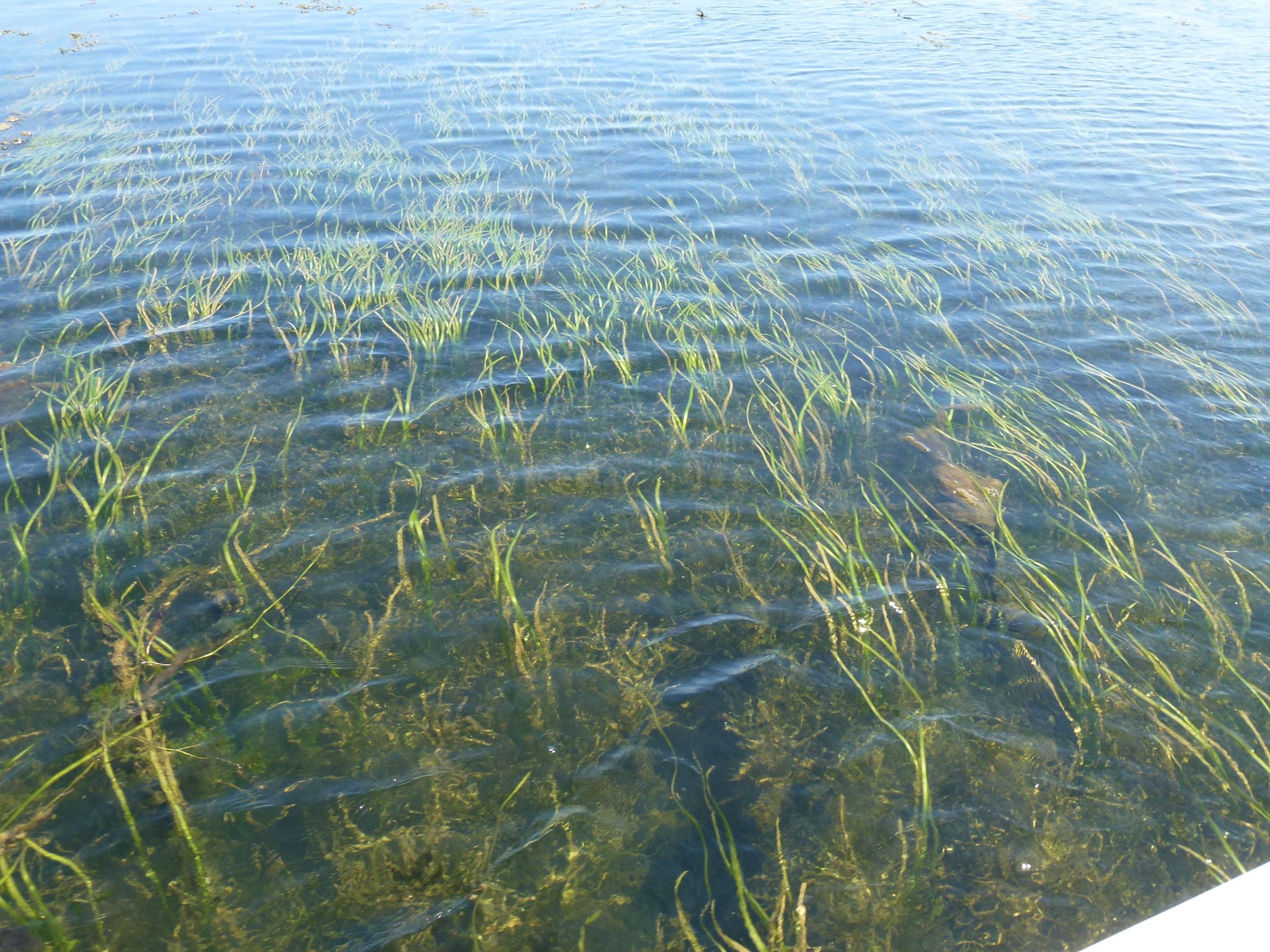
The ultimate submersed bass habitat can be found in eelgrass, also known as wild celery. The vertical nature of this plant (as opposed to thick matting and tangling of plants like hydrilla) makes it much easier for bass to search for prey while also allowing for plenty of oxygen exchange. Eelgrass is the premier plant for any bass lake. Easily maneuver a swimbait or soft plastic around its leaves in late spring and early summer, or punch it with a heavy creature bait in fall. Early spring can also be a good time to rip a reaction bait across its newly formed leaves.

Masquerading under the false name Brazilian elodea, the invasive Egeria can look like hydrilla on steroids. A good way to tell the two apart is to look for âteethâ along the leaves. Hydrilla has the teeth, while Brazilian elodea appears smooth. The thick stem and robust leaves of this plant make it hard to fish, but fishing a swimbait or buzzbait along its edges can produce in early summer.

Often, anglers think they are fishing hydrilla when theyâre actually fishing a similar native plant known as elodea, or Canadian waterweed. This plant provides all of the good matting potential of hydrilla without growing into depths and places that impede fishing and navigation. It can be tough telling hydrilla and elodea apart, but elodea is usually much smaller than Egeria or hydrilla.
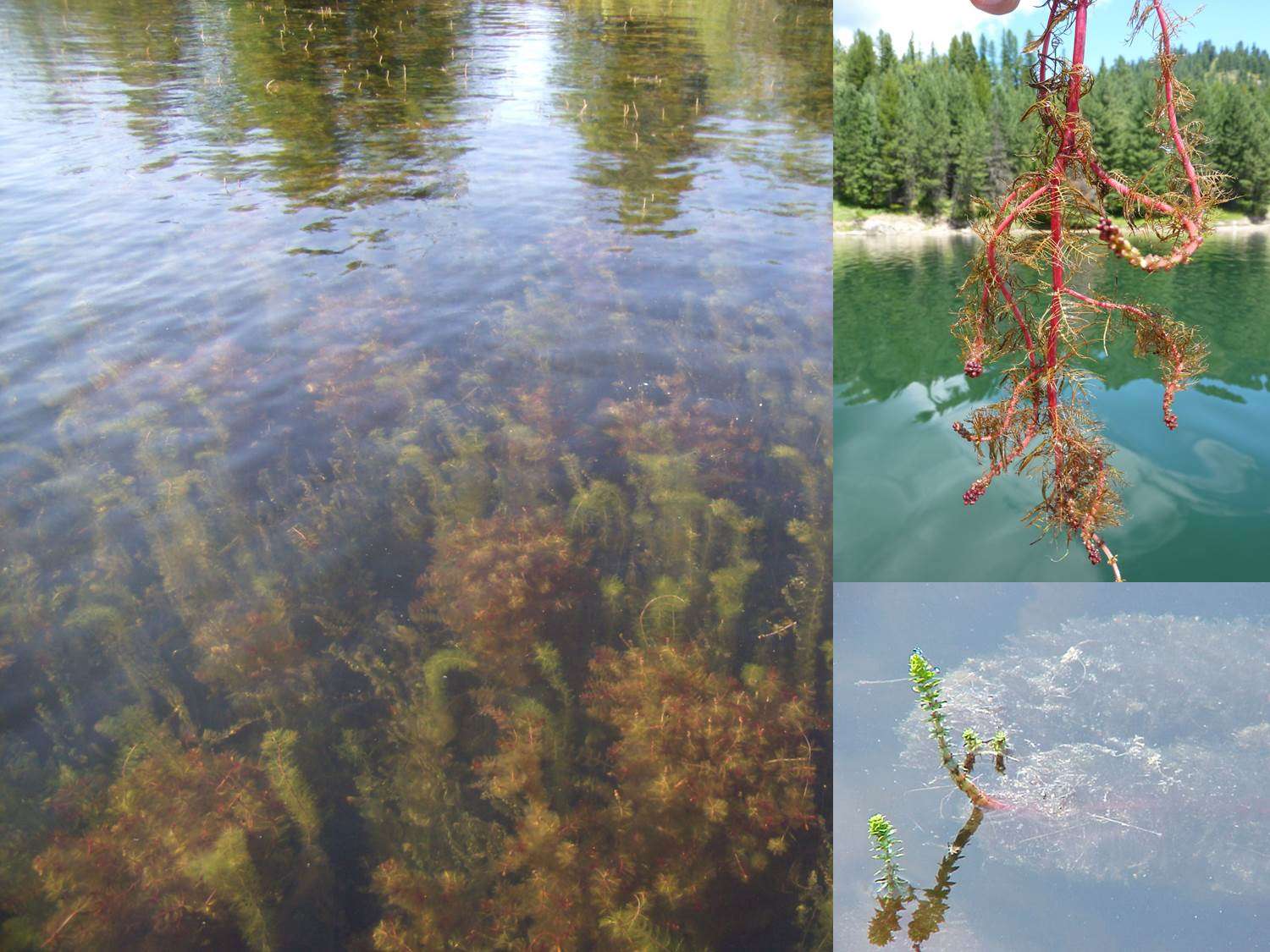
Invasive milfoil plants can be considered some of the first submersed invaders into the United States. With whorls of leaflets around the stem of the plant, the milfoils come in several invasive and native varieties. Invasive Eurasian watermilfoil is certainly one of the most common, growing submersed with a distinct âspikeâ popping out of the water in late summer. Another invasive milfoil is parrotsfeather, which can actually grow out of water or on banks. The milfoils are all very similar, with reports of invasive and natives creating hybrid populations in the wild. Milfoils can often be targeted much like hydrilla with fishing being good for most of the year, with the exception of late summer when the plant forms impenetrable mats.
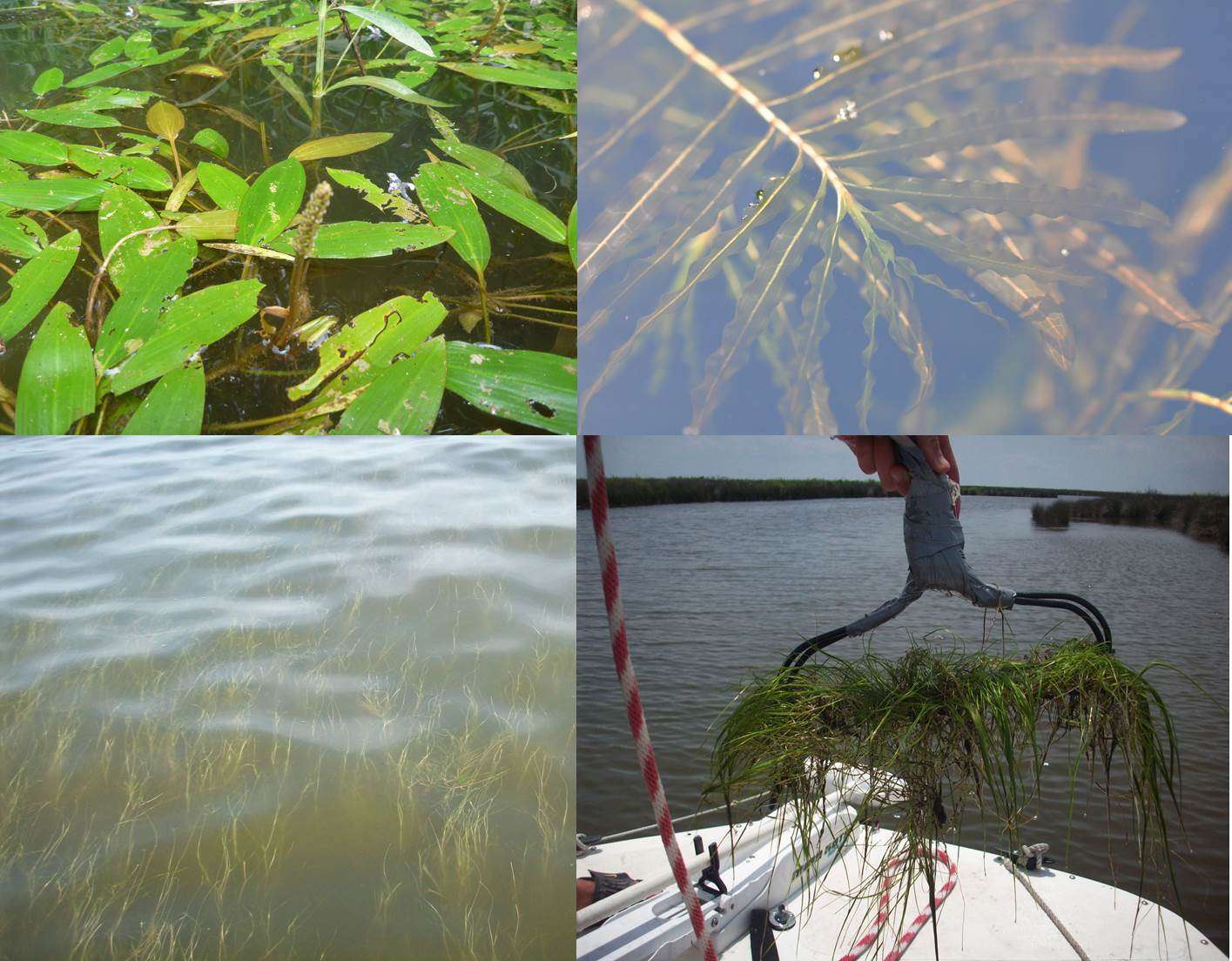
Of all submersed plants, the pondweeds come in many shapes and sizes. There are at least 65 species in the United States. Some leaves float and are lancelet, such as American pondweed, and others are narrow-leafed, such as sago pondweed and slender pondweed. Most of our pondweeds are native and provide wonderful habitat for bass and other species. One invasive member of the pondweed family is curly leaf pondweed, which causes numerous problems in Northern states. Curfly leaf, which can easily be identified by its curly leaves, also begins growing before most other plants in early spring.


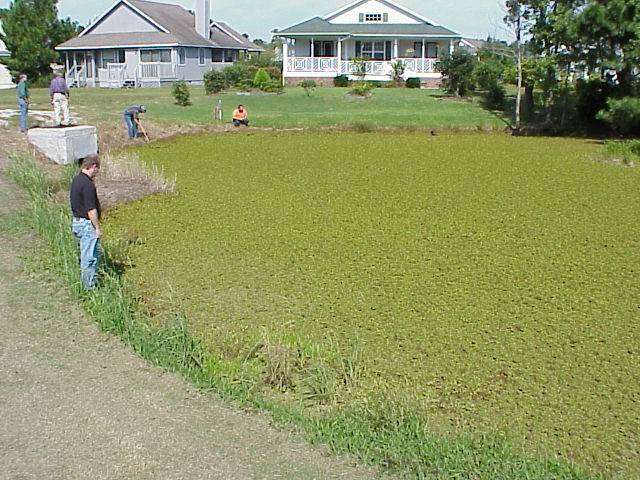
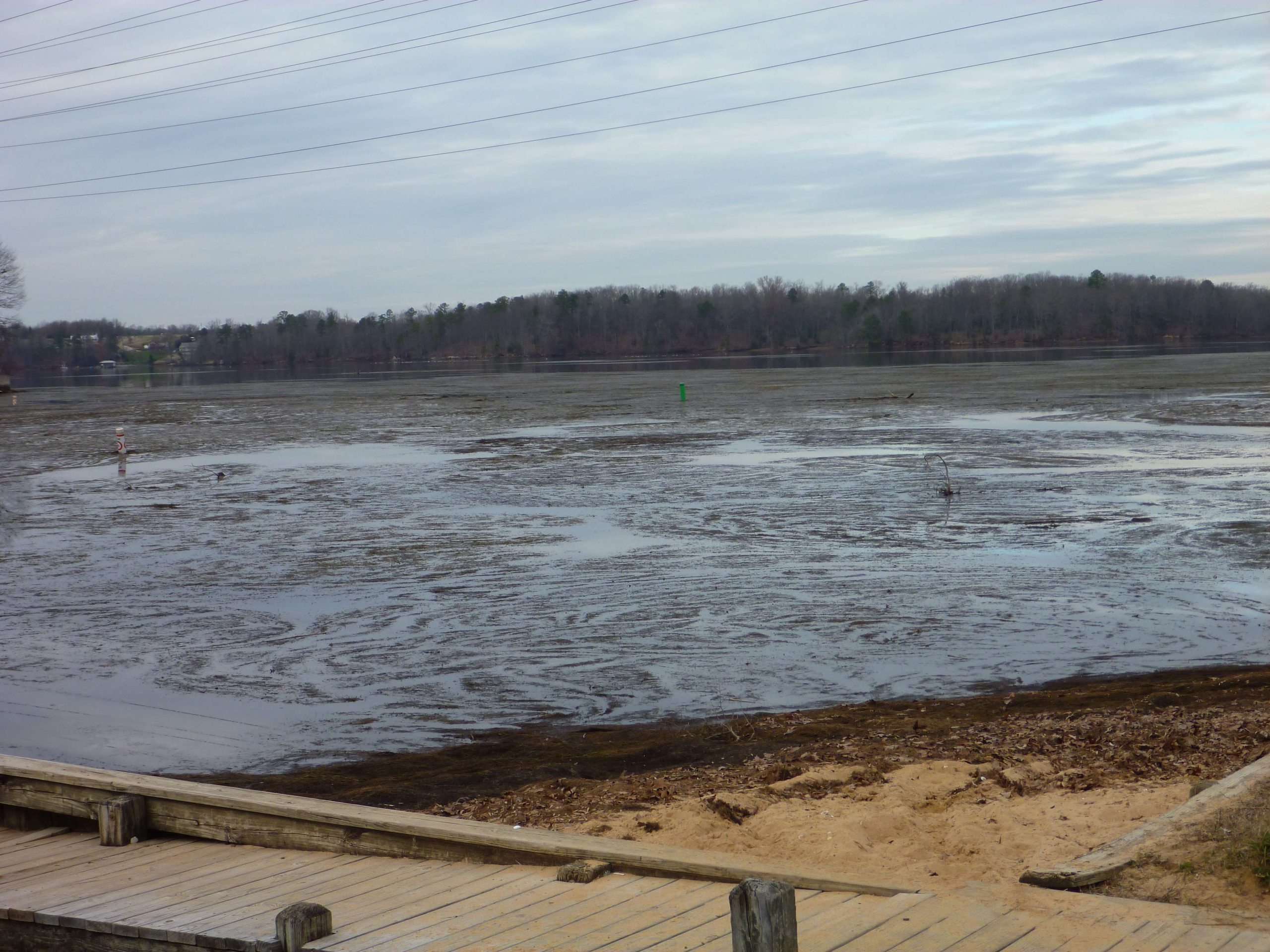



Originally published in 2014




